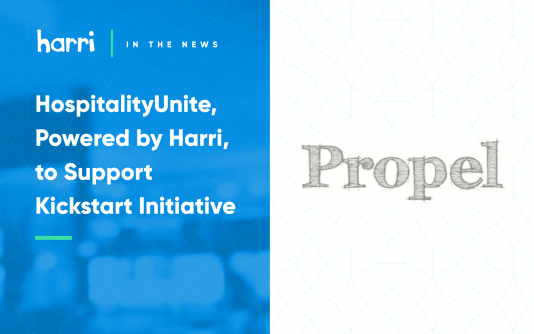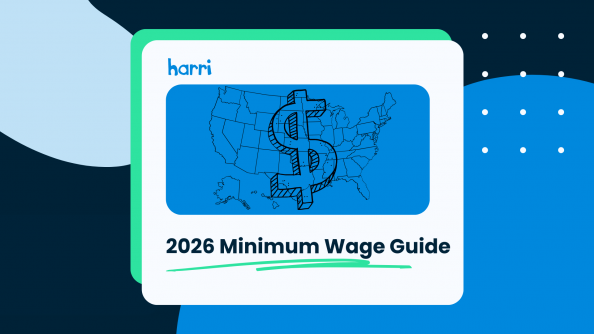What “Product People” Don’t Tell you About Building Products

- By Harri Insider Team | September 30, 2020
Co-Host Mihaela Pratic, Product Manager for Harri, introduced the Harri webinar which featured in the London Product Management Festival in September.
Mohammed Rabay’a, Chief Product Office for Harri, takes us through the principles of Product Management and reveals what “product people” don’t tell you about building products. Rabay’a speaks candidly and from the heart.
He starts by explaining the difference between personal and enterprise product management:
- Personal (Consumer): Personal solutions are easy and straightforward – Easy to use and simple to execute
- Enterprise: Much more complex – You need to think about the complexity; plan in training and build in a configurable, customisable tool.
Product Managers tend to show the “bright side” of their career. We all have a sense of what we think the ideal product should look like. People don’t tend to share the “dark side” of product management; the bright side is what you will see on Social Media and what people love.
Users generally hate software that is forced upon them. They prefer software from the bottom up. The Product Manager’s job is to align user goals and business goals. Users are usually lazy – they are reticent to invest much time in training. The software should be straightforward, intuitive, and easy to understand.
Ego analytics (or bias) – Product Managers need to see the data and statistics to support the software looking great.
How important is the ROI? There must be constant improvements in the daily routine and cost. You need to create trust with the software and user; make simple and straightforward.
Enterprise software needs to be continually updated apps and software, and Product Managers need to be aware about removing bias (or the “ego analytics”).
The Art & Science of prioritisation When considering and building your product, if you list how to prioritise all elements of the product, you will come up with a matrix diagram. There is Science and Art to this:
Science:
Features
Revenue
Customer Value
Strategic Value
Implementation Cost
Operational cost
Risk
You should give a score for each feature and prioritise based on the score
Art:
What would be stupid for us not to do in the first 90 days?
Define and scope every idea on one page
Roughly calculate engineering capacity
Express in monetary amounts
You don’t need to spend time speccing and wire-framing; a one-pager is good and a call with the engineering team
Then score/weight the features and determine over the next 90 days
Opinion vs Fact
Within a start-up you will have Product Managers and non-tech teams; all with opinions!
The best analogy to describe this:
Imagine you are dancing with people on the floor at a party – it’s hard to spot who is dancing well and who isn’t, especially when you’re dancing with them.
If you stand on the balcony, you can see who is doing a good job dancing and who isn’t.
Product Managers are dancing on the floor with sales, marketing, engineering, etc, and focus on small things; misguided by the feedback they are receiving and things start to build to the backlog.
It is important to stand on the balcony for a while and think about ideas in a different way; a different perspective and a wider picture – this is one of the hardest things for a Product Manager to do.
The Data-driven approach More than 30% of the Product Managers are focussed on the feedback they receive, not the data. We need to add data in a way that will support the feedback. Data gives you facts.
Humanise vs Digitise
Everyone comes with an opinion. You need to counter-argue the opinions and support opinions with facts; important to humanise the flow you are building before digitising it. Monitor the analogue way of doing it, which will give you a wider lens to explore the flow.
Just do it!
The journey and factors to build a new product or feature is overwhelming in order for you to build confidence; when you think about user flows and scenarios; it can cause sleepless nights – Are we doing it right? What are we missing? Draft a scope for the product and get feedback and ideas – it can be painful and starts to create self-doubt.
The solution? – Stop everything and just do it! Learn from your mistakes very quickly and move on.
Product Managers will always give the impression they are confident; the swan effect!
Handling feedback
Product Managers will take feedback personally; you’ll pretend that people don’t understand the product, it isn’t personal. Remember to stand on the balcony; listen to the facts, understand and analyse the persona. The more you listen and understand, the more you can analyse the feedback and requests and turn them into action.
Remember nothing is perfect; it will never tick all of the boxes, you need to focus on certain functions of the product which will make an impact. Then visualise the feedback and provide options; remove bias and if it’s good, seek more feedback and build.
Zero to Engagement
Example: Instagram – nice pictures but won’t always drive engagement. You need to keep your solution simple (smart not stupid) – for consumer or enterprise. You can scale it but simplicity is the key in order to do this. If your software is saving time and effort, you are winning. If this doesn’t happen, people won’t use it. Be the user and understand how this is done. Keep updating software and features.
User Experience (UX) – People do like to scroll and click if the software is done right. People scroll on i-phones etc. It’s a User habit. Make scrolling and clicking meaningful and build into the product.
Product Managers take their role very seriously as a career and are passionate about the software they build. Passion will drive and create products and you will care about them and challenge every new idea and build.
Q: How do you know when to grow your team?
Back to prioritisation – You need to know when you are utilising your team to the max capacity – this isn’t how many hours they are working; it is whether they are utilising the resources. The pipeline you are building – products and non-product items – sales are growing; marketing is expanding (non-product items) – KPI’s being met – a green light to grow your team.
The first version of your product – analyse the persona you are dealing with. Adding more engineers will slow them down. The team needs to expand gradually and align with business goals.
Q: How does product build feedback to product marketing?
One of the big responsibilities of the Product Manager is to understand why the product is being built – How, what, and when?
Product marketing – no difference from the product – described in a way that the end-user will relate to; explain the product in a way that is easy to understand. Product Managers will see every aspect but has to understand A,B,C and D to market it to prospects.
Q: What is the ideal way to get user feedback to commercialise products?
You need to provide value – people won’t be interested until the value is proven. You need to test and verify. If you deliver for enterprise, you need to think about how the product will provide value – Cost? Location? Persona – Who is using it? What is the persona using now?
Q: What’s the most exciting product at Harri?
These are my babies! I usually take the credit but my team does everything. Scheduling and rota’s are the product I am really proud of. Before we shipped it, we discovered it wasn’t functional and this was a shock at first – a very good example of bias. We knew we were missing something and we have suffered with it; a lot of sleepless nights but in the end, we understood it and came out of the dark side; The bright side is now shining!
For more information on the Harri solutions click here.

















